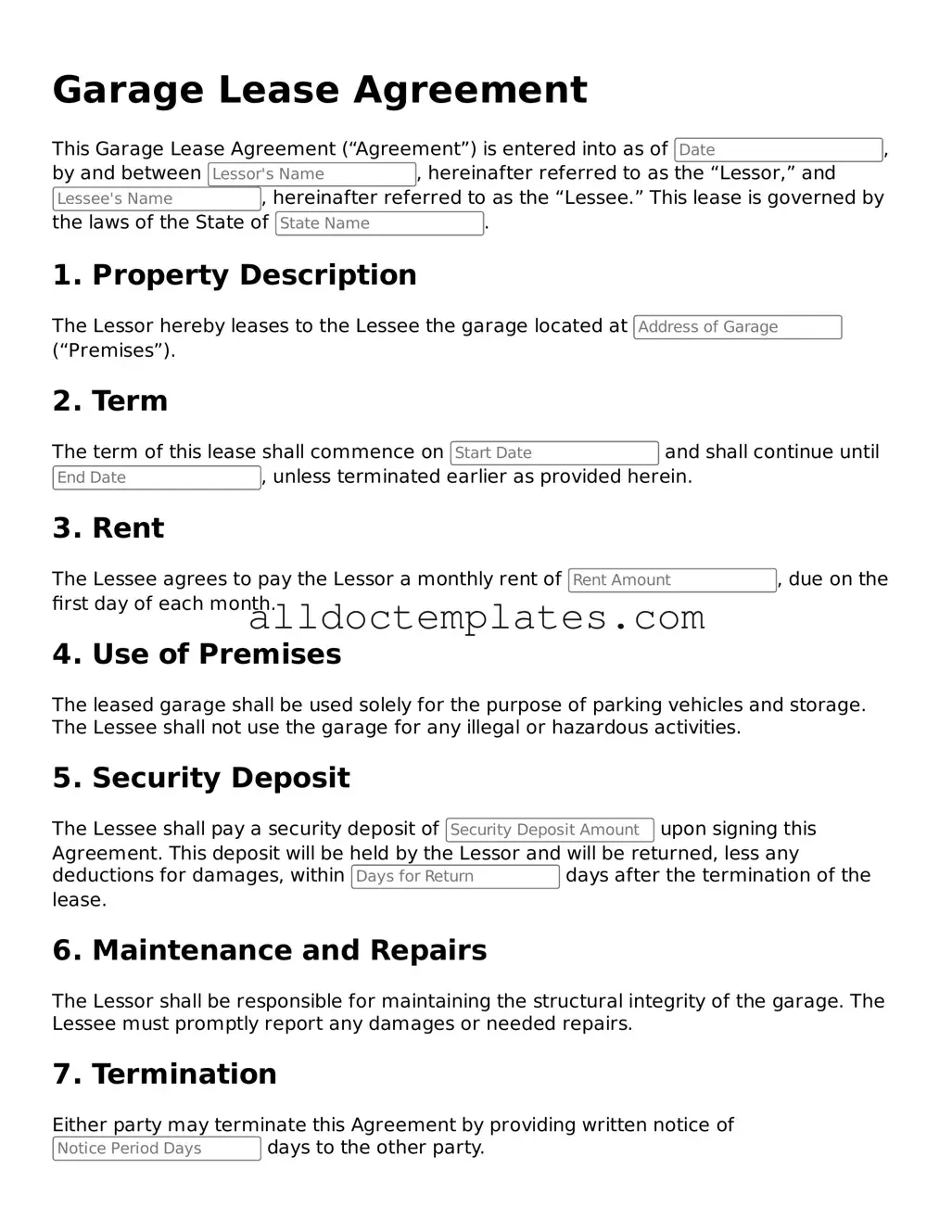Valid Garage Lease Agreement Template
A Garage Lease Agreement is a legal document that outlines the terms and conditions under which a landlord leases a garage space to a tenant. This agreement typically includes details such as rental duration, payment terms, and responsibilities of both parties. Understanding this form is essential for ensuring a clear and mutually beneficial rental arrangement.
Get Your Form Now
